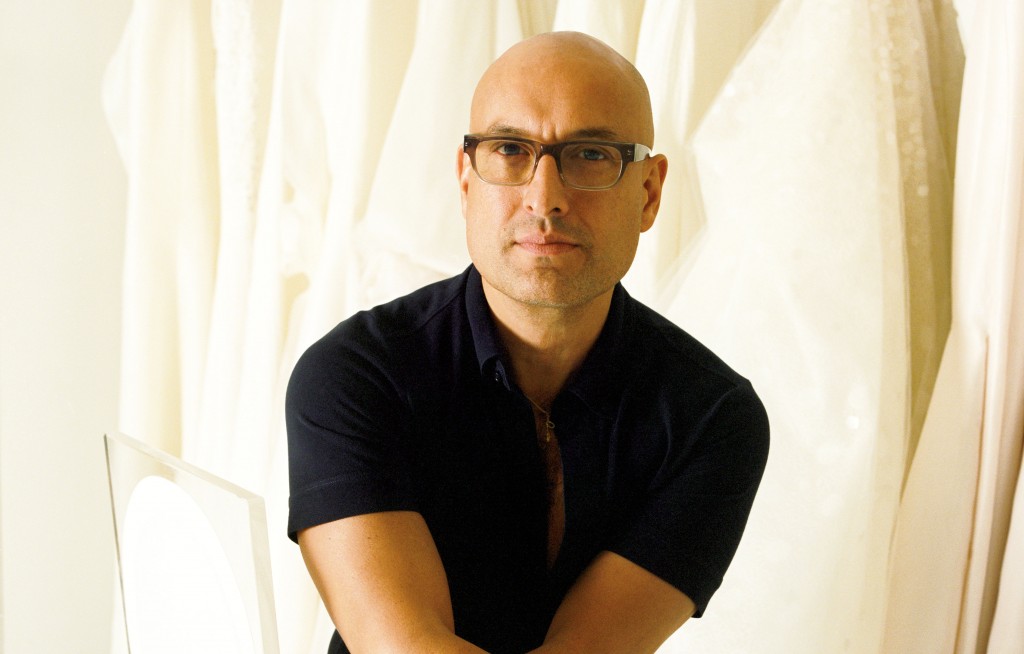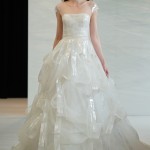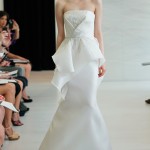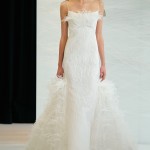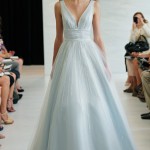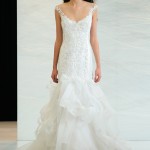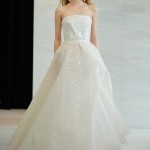Structural Design
By Laura Neilson | Photos by Dusdin Condren
The fashion flock may best recognize Angel Sanchez for his streamlined and structured womenswear designs, most especially his unforgettably elegant wedding and evening gowns. But some might be surprised to know the roots behind the Venezuelan-born designer’s influences: he’s actually a trained architect. Clearly, one discipline informed the other, resulting in a distinctly refined vision that often transcends the usual ephemeral nature of fashion and trends. We met with Sanchez in his NYC showroom to discuss his transition from blueprints to dress patterns, and how he’s even managed to fuse the worlds.
Tell us about your first foray in design—as an architect, not a fashion designer. Where did you study?
The Simón Bolívar University in Caracas. They had an architecture program—full career, six years. And I worked for a year for a big firm in Caracas.
What made you cross over into fashion?
I played with fabrics since I was a little kid, and I was very familiar with the whole process of making a dress, but I never thought it was a career for me. But then I realized being an architect gave me so many three-dimensional ideas. Being an architect, all this background helped me to face fashion in a very useful way. And I could see all my ideas materialize faster than waiting for a building. The design process to make a building—to build a building is slow, and I’m impatient. I cannot wait that long!
Did you have any formal training when you decided to transition?
I learned from my mom, from my work, and practice. But I never went to fashion school. In that moment, fashion school in Venezuela didn’t exist. My mom was my best school—and I learned a lot from my clients. Practice. Working.
Were there any early designers who inspired you? Did it help your self-education?
Definitely [Cristóbal] Balenciaga. He really dedicated his life to his career and his clients. Also the way he constructed his dresses: his patterns, how he cut on the bias, the undergarment… all this couture influence was very, very inspiring. And then I started to see a little of the light part of fashion—the beauty of a Valentino dress, the feeling and the romance. I thought it was beautiful, and I think it influenced a lot of my work in the way he understood a woman.
What is it you love so much about bridal?
Bridal’s so natural. The first 12 years of my 25 years, I did a lot of custom-made bridal where you have to understand a client, her style, the idea that the client has in her mind, and to try and please her. I did beautiful wedding dresses in the couture point of view. That’s where you show all your skills, not only as a designer, but also as a couturier: the quality of your sewing, the quality of your beading… the ability to make a dress at that level. Those years made me understand the meaning of a wedding dress. I really got connected with my clients in terms of the dream they have, and the expectations they have of me. It’s a unique experience.
And now, designing ready-to-wear?
Designing collections for ready-to-wear bridal—it’s a different approach. It’s not as personal, but still, I sit down, and I design a bridal collection in three or four days.
Three or four days? That’s astounding. Do you already have imaginary clients in mind when you’re designing, then?
Yes. I try to get into all these different experiences from my couturier career and put them in a collection: “This is the romantic, this is the traditional, this is the more avant-garde, this is the more elegant.” And I really enjoy it so much because I don’t have to worry about trends. I don’t have to worry about color trends. It’s always white. Bridal is about timelessness. It’s about lines, about lightness, about something more refined or romantic.
There’s a similarity to architecture in the idea of that timelessness. A wedding dress reflects a moment, but it’s meant to stand the test of time.
Yes. The meaning of a wedding dress in the life of a woman is so important. And always, when I meet clients after 15 or 20 years, she remembers me as an important part of her life because I designed her wedding dress.
You’re also currently working on some interior design projects with your partner, Chris Coleman. How is that going?
We’re doing three or four projects together. I’m really enjoying it. It’s my second chance to express myself. Being an architect, you can be a fashion designer, an interior designer, a graphic designer, because you have that skill set.
Have you designed your stores?
I designed my showroom, and I designed my store in Caracas. But my dream now is to open my store in the United States and design it. I have some ideas. I have some sketches.

